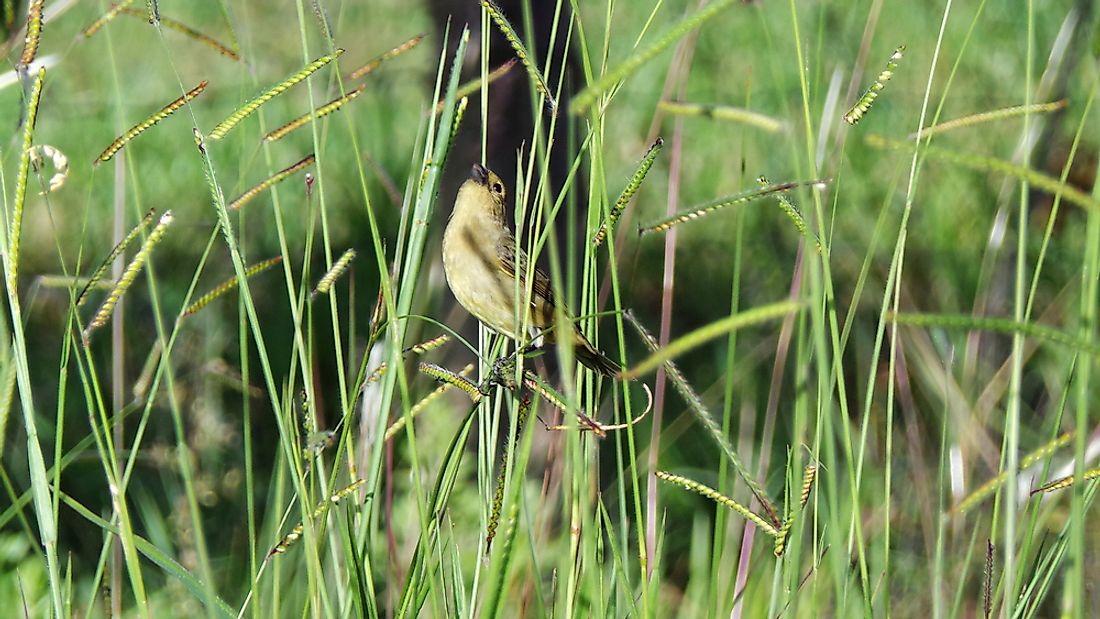Endemic Birds Of Ethiopia

Ethiopia is a federal parliamentary republic located in the Horn of Africa with its capital in Addis Ababa which is also the largest city in the country. It is the 27th largest country in the world with an area coverage of 435,071 square miles. This large size makes Ethiopia an ecologically diverse ranging from arid areas to tropical forests in the south. The nation enjoys a high level of endemism with 31 species of endemic mammals and over twenty species of endemic birds. In total, there are more than 850 species of birds that have been recorded in the country. In this article, we will discuss the endemic birds in the country.
Endemic Birds Of Ethiopia
Blue-winged goose
The blue-winged goose is a relatively large goose which is about 28 inches long with the head being paler than the body. The feet and the beak are black, while those of the younger birds are duller. It feeds by grazing and is primarily nocturnal. The IUCN has listed the bird as vulnerable with the goose population on a decline. The greatest threat is habit loss and excessive hunting for meat.
Ethiopian siskin
The Ethiopian siskin is locally referred to as the black-headed siskin or the Abyssinian Siskin. It is a small bird measuring less than four inches long with a thin pointed beak. The males have the entire head and neck sooty black. Their natural habitat is montane forests and open grasslands. There are two spawning periods in a year; May-June and August-October. They are territorial during the breeding period.
Yellow-throated seedeater
The natural habitat of this bird is tropical and subtropical shrubland. It favors dry areas, especially on rocky hillsides with thick patches of scrubs. It is in the Fringillidae family and prefers living in highland areas as opposed to lowlands. It is listed as a threatened species by the IUCN with habit loss being the leading threat.
Prince Ruspoli turaco
The natural habitat of this bird is subtropical dry forests. It was first discovered by Prince Ruspoli in 1892 and later examined by T. Salvadori who named the bird Ruspoli in honor of its founder. The upper body is green while the back and the tail are dark. While flying, it displays colorful patches of bright colors. The bill and the eye ring are bright red.
Stresemann bush crow
Stresemann bush crow is a pale gray bird with black tail and wings. The beak is also black and is curved at the tip. This bird is 11 inches long and weighs 4.6 oz. The bush-crow feeds on beetle larvae and is commonly found near grazing lands. Cow dung is rich on beetle larvae. The changes in feeding patterns of the local Ethiopian herders have adversely affected the existence of the bird. Previously, they used to leave around cow dung covered by loose soil. However, private land ownership has led to overgrazing, and intensive planting of crops denies the bird its feed. The IUCN has listed the bird as endangered due to its limited habitat and limited range.
Threats and Conservation efforts
Human activities have been named as the leading threats to the existence of these birds. Forest fires have also contributed to death and habit loss and hence further straining the conservation efforts.The IUCN has raised the alarm over the rapid decrease in the number of turacos with their population being estimated at 2,500 adults in 2010.
Endemic Birds Of Ethiopia
| Endemic Birds of Ethiopia | Scientific Name |
|---|---|
| Blue-Winged Goose | Cyanochen cyanopterus |
| Degodi Lark | Mirafra gilletti degodiensis |
| Abyssinian Longclaw | Macronyx flavicollis |
| Ethiopian Siskin | Serinus nigriceps |
| Yellow-Throated Seedeater | Crithagra flavigula |
| Erlanger's Lark | Calandrella erlangeri |
| Abyssinian Catbird | Parophasma galinieri |
| Stresemann's Bushcrow | Zavattariornis stresemanni |
| White-Tailed Swallow | Hirundo megaensis |
| Prince Raspoli's Turaco | Tauraco ruspolii |











